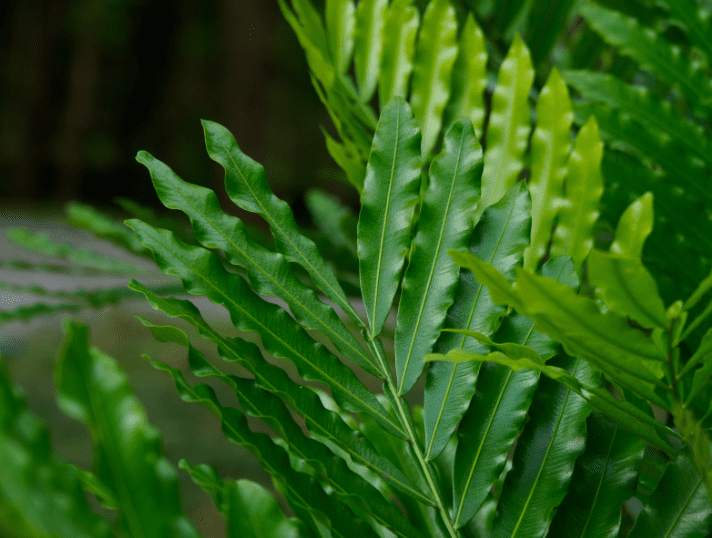
The Japanese fern tree, or Filicium decipiens, stands as a testament to nature’s artistic flair, effortlessly blending ferns’ elegance with a tropical tree’s robustness. Native to the tropical regions of Southeast Asia and India, this captivating tree is a misnomer—it’s not a true fern.
The Japanese fern tree’s distinct appearance, characterized by its fern-like leaves, adds an exotic touch to any garden. Its care, while straightforward, demands attention to specific details, ensuring it thrives in various settings.
The Essence of Japanese Fern Tree Care
Caring for a Japanese fern tree involves understanding its basic needs: adequate light, suitable soil, balanced watering, appropriate temperature and humidity, regular fertilization, and timely pruning. By mastering these elements, you can ensure your Japanese fern tree remains a vibrant and healthy addition to your garden.
The Japanese fern tree, scientifically known as Filicium decipiens, is a captivating plant that adds an elegant touch to any garden or landscape. This tree creates a tranquil and enchanting atmosphere with its delicate fronds and graceful branches.
The Japanese fern tree is highly regarded for its ornamental value and is often sought by gardening enthusiasts for its unique beauty. Its distinctive foliage and charming appearance make it a standout choice for creating a serene and sophisticated outdoor space.
Light: Sunlight’s Role in Vibrant Growth
The Ideal Spot for Your Fern Tree
Filicium decipiens thrives in a balance of sunlight and shade. While it enjoys bright light, harsh direct sunlight may scorch its delicate leaves. A spot that receives filtered sunlight or partial shade for most of the day is ideal. This balance ensures the tree grows lush and vibrant, showcasing its unique foliage.
Soil: The Foundation of Health
Crafting the Perfect Growing Medium
The soil for your Japanese fern tree should be rich, well-draining, and slightly acidic to neutral in pH. Incorporate organic matter like compost or peat moss to improve drainage and fertility. A good soil foundation is crucial for root health and overall growth.
Water: The Art of Hydration
Balancing Moisture for Optimal Growth
Watering your Japanese fern tree requires a careful balance. The soil should be kept consistently moist but not soggy. Overwatering can lead to root rot, while under-watering can stress the tree. Developing a regular watering schedule, adjusted for seasonal changes, is critical to maintaining a healthy Japanese fern tree.
Temperature and Humidity: Creating a Tropical Haven
Mimicking Natural Conditions
Japanese fern trees prefer a warm, humid environment, typical of their native tropical habitat. They flourish in temperatures ranging from 60°F to 85°F (15°C to 29°C). Protecting them from frost and ensuring adequate humidity is essential, especially in cooler or drier climates.
Fertilizer: Nutritional Support for Robust Growth
Choosing and Applying the Right Fertilizer
A slow-release, granular fertilizer is ideal for the Japanese fern tree. Fertilize during the growing season to avoid over-fertilization, which can cause salt damage to the roots. A balanced approach promotes healthy, vibrant foliage and a robust root system.
Pruning: Shaping Beauty and Health
The Art of Pruning Your Fern Tree
Pruning is vital for maintaining your Japanese fern tree’s shape, health, and size. Prune in the late winter or early spring to remove dead or diseased branches and to encourage new growth. This also helps prevent self-seeding, ensuring your tree remains manageable and attractive.
Propagation: Spreading the Fern Tree’s Magic
From Seed to Splendor
Propagating a Japanese fern tree from seeds is a rewarding experience. Plant the seeds in well-draining soil and provide consistent warmth and moisture. Patience is key, as germination can take several weeks. Watching a new tree emerge from a tiny seed is a true gardening delight.
Growing in Pots: Versatility in Gardening
Container Gardening with the Japanese Fern Tree
Growing a Japanese fern tree in a pot offers flexibility and convenience. Choose a container with adequate drainage and space for the tree to grow. Repotting every few years is essential to provide fresh soil and additional room for growth.
Common Issues: Navigating Challenges
Protecting Your Tree from Pests and Diseases
Be vigilant against pests like aphids and diseases such as root rot. Regular inspection and prompt treatment are crucial. Organic pest control methods and ensuring good air circulation can prevent most issues.
Conclusion
In conclusion, the Japanese fern tree is a striking and rewarding addition to any garden. Its unique appearance and manageable care requirements make it a favorite among garden enthusiasts. Following the guidelines outlined above, you can enjoy the beauty and elegance of this tropical gem in your own outdoor space.
Your Gardening Adventure Awaits
We encourage you to embark on growing a Japanese fern tree. Share your experiences and questions in the comments section below. For more gardening insights, subscribe to our blog and explore related posts. Let the Japanese fern tree transform your garden into a tropical paradise!

























